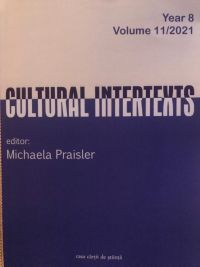Constructing Reality: The Ways of Seeing in Ali Smith’s How to Be Both
Constructing Reality: The Ways of Seeing in Ali Smith’s How to Be Both
Author(s): Dilara ÖnenSubject(s): Language and Literature Studies, Literary Texts, Fine Arts / Performing Arts, Visual Arts, Fiction, Studies of Literature, Novel, Philology, Theory of Literature, British Literature
Published by: Editura Casa Cărții de Știință
Keywords: Ali Smith; art; ekphrasis;
Summary/Abstract: How to Be Both by Ali Smith, which centres around the concept of art and reality to a great extent, is an experimental novel that invites the reader to think through dualities, including life and death, artwork and human; and, significantly, from the perspectives of eyes and camera. Divided into two sections, the novel includes two stories which are decade-apart. One of them focuses on the life of the 15th-century artist Francesco del Cossa, and the other is reflected through the point of view of George, a young girl from the contemporary period, dealing with the loss of her mother, as she recalls some precious moments she shared with her. The different plots merge when George and her mother go to see the paintings of Cossa. By foregrounding the two kinds of perception, Smith’s novel signifies the art critic John Berger’s theory of perspective, indicated in his BBC series-based book Ways of Seeing. According to Berger’s cultural theory, the human eye, like a painting on the wall, can only be in one place at a time. Yet, the camera takes its visible world with it as it moves, and through the camera we can see things which are not in front of us; it is freed from the boundaries of time and space. The aim of this paper is to demonstrate the significance of gaze while interpreting relative reality in Smith’s novel by employing Berger’s cultural and artistic theory.
Journal: Cultural Intertexts
- Issue Year: 11/2021
- Issue No: 11
- Page Range: 184-193
- Page Count: 10
- Language: English

